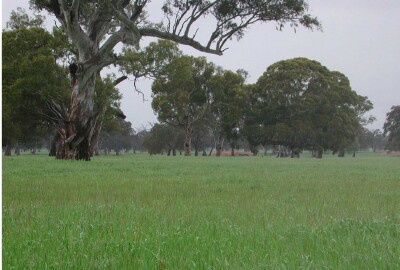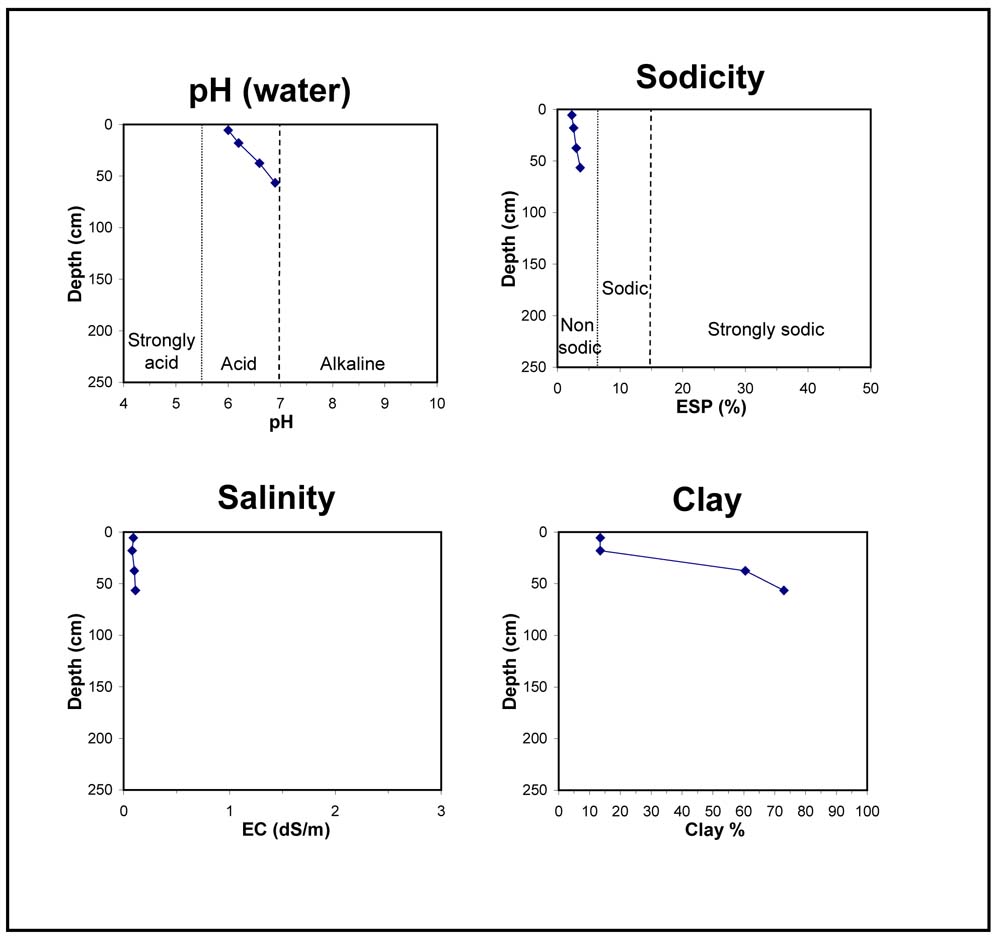| A1 | 0-10 cm | Brown (10YR5/3), sandy loam, massive structure, loose to very weak consistence when dry, a few small rounded ferruginised nodules (2-6 mm), pH 6.0. Sharp transition to: |
| A3 | 10-25 cm | Brown (10YR5/3), sandy clay loam, massive structure, very weak consistence when dry, subangular ferruginised nodules (6-20 mm) are abundant, pH 6.2. Sharp transition to: |
 | Subsoil |  |
| B21 | 25-50 cm | Dark yellowish brown (10YR4/4), light clay, a few medium faint to distinct yellowish brown (10YR5/6) mottles, weak prismatic structure, very firm consistence when dry, subplastic, very few medium organic root linings and soft segregations (2-6 mm), a few small subangular ferruginised nodules (2-6 mm), pH 6.9. Clear to gradual transition to: |
| B22 | 50-65+ cm | Dark yellowish brown (10YR4/4), light clay, a few faint to distinct medium yellowish brown (10YR5/6) mottles, weak to moderate prismatic structure, very firm consistence when moist, subplastic, very few medium organic root linings and soft segregations (2-6 mm), a subangular ferruginised nodules (2-6 mm) are common, pH 6.5. |




